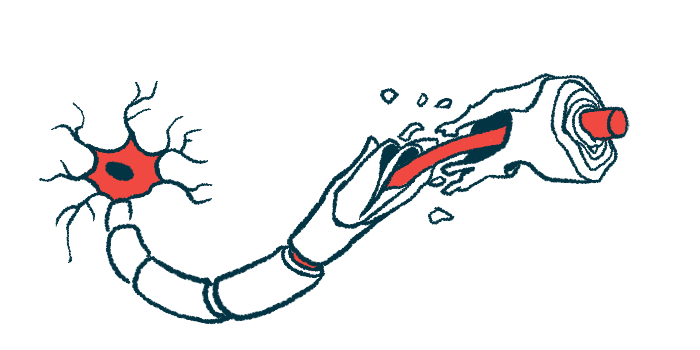Sugar molecule found to promote myelin repair in cell model
Made in the body, polysialic acid may help turn on cells for myelin sheath repair
Written by |

Treatment with polysialic acid, a sugar molecule naturally made in the body, may be a promising approach to boost myelin repair in people with multiple sclerosis (MS), according to a new study in lab-grown brain samples.
Findings show that the molecule increased myelin repair, or remyelination, in the cell model of MS by altering the activity of brain immune cells called microglia.
While more studies will be needed to address the potential of this approach in patients, “these studies provided proof of principle for the potential of therapeutic [polysialic acid] applications,” researchers wrote.
The study, “Polysialic acid promotes remyelination in cerebellar slice cultures by Siglec-E-dependent modulation of microglia polarization,” was published in Frontiers in Cellular Neuroscience.
Therapies that can promote myelin hold promise for MS
MS is caused by inflammation in the brain and spinal cord, which leads to demyelination, or damage to the myelin sheath, a fatty covering around nerve fibers that helps nerves to send electrical signals.
No therapies are yet available that can promote myelin repair, but finding ways to do so is considered a promising treatment strategy for MS.
Polysialic acid, or polySia, is a sugar molecule that’s normally attached to certain proteins in the body’s cells. This molecule is known to be involved in helping several types of brain cells to communicate with their neighbors. Some early data have suggested that polySia may have the ability to promote remyelination, though the details remain poorly understood.
In the study, a team of scientists in Germany conducted a series of tests using cerebellar organotypic slice cultures, which is a cellular model made of brain slices designed to mimic how cells grow in the brain. In this case, the researchers used slices from mouse cerebellum, a region of the brain involved in coordination and cognition that is commonly affected in MS.
The team found that, when myelin damage was induced, polySia levels were high. In contrast, when remyelination was taking place in this model, levels of polySia made by the cells were very low.
The scientists then tried adding extra polySia to the cells, and found that doing so could increase remyelination. Notably, polySia molecules come in several sizes, and the researchers found that a particular size (24 to 30 degrees of polymerization) was most effective at inducing remyelination.
polySia could switch microglia to anti-inflammatory state
Myelin is mainly made by cells called oligodendrocytes, and it’s been assumed that, if polySia can promote remyelination, then it probably works to activate early immature oligodendrocytes (known as oligodendrocyte precursor cells). However, the researchers found that polySia had minimal effects on this precursor cell activity.
Instead, the scientists found that polySia could alter the activity of microglia, which are resident immune cells in the brain thought to contribute to the inflammatory attack that drives MS. When microglia were treated with polySia, they switched from a pro-inflammatory state to an anti-inflammatory one, allowing them to promote remyelination.
“Numerous studies demonstrate that a shift of microglia polarization from a proinflammatory toward an anti-inflammatory phenotype supports remyelination, pinpointing microglia as an attractive therapeutic target,” the researchers noted.
Hauke Thiesler, PhD, a postdoctoral researcher at Hannover Medical School in Germany, said in a university news story: “The microglial cells are the key cells that do the work directly on site and which we want to guide in a certain direction, so to speak, with the help of polysialic acid and thereby programme them for healing,”
Additional analyses showed that polySia affects microglia activity by binding to a protein receptor called Siglec-E on the surface of these cells.
“These data indicate that polySia [of size 24 to 30 degrees of polymerization] not only inhibits the proinflammatory activation of microglia during remyelination but also induces a Siglec-E-dependent shift in polarization toward a protective phenotype that supports remyelination,” the scientists wrote.
Scientists eye more testing in animal models of MS
“The advantage is that the Siglec-E receptor in the brain actually only sits on the microglia cells and the polysialic acid can therefore intervene there in a very targeted way,” Thiesler said.
Because this study was limited to experiments done in a cellular model, the researchers are hoping to explore the effects of polySia next in animal models of MS before potentially turning to patients.
“For this, we would like intensive cooperation with other research groups and plan to submit a funding application to the Institute for Biomedical Translation (IBT) Lower Saxony so that our findings reach the bedside as quickly as possible,” Thiesler said.







